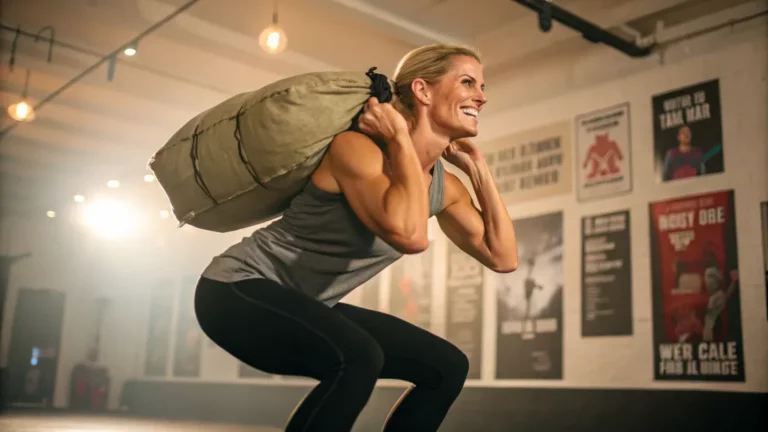Ever wondered why physical therapists, pro athletes, and fitness enthusiasts are turning to what looks like a glorified sack of sand for their workouts?
Spoiler alert – It’s not just about looking tough!
Welcome to the world of sandbag training – your new secret weapon for building real-world strength that translates to everything from sports performance to everyday activities.

Whether you’re an athlete looking to enhance your game, recovering from an injury, or simply wanting to bulletproof your body against future aches and pains, these three brutal (but adaptable!) sandbag workouts are about to become your new best friend.
Why sandbags? Unlike traditional weights, sandbags are unwieldy and shift as you move – just like pretty much everything else you lift in real life.
This instability forces your stabilizer muscles to work overtime, building the kind of functional strength that helps prevent injuries and enhances athletic performance.
Plus, they’re incredibly versatile and perfect for home workouts!
Here, we’ll dive into three intense sandbag workouts that can be modified for any fitness level.
You’ll discover how to unleash your inner beast while building practical strength that serves you both in and out of the gym.
The best part?
These workouts can be scaled up or down, making them perfect for everyone from competitive athletes to those in rehabilitation.
Ready to discover why this ancient training tool is making a massive comeback in modern fitness? Let’s dive in!”
Choosing the Right Sandbag
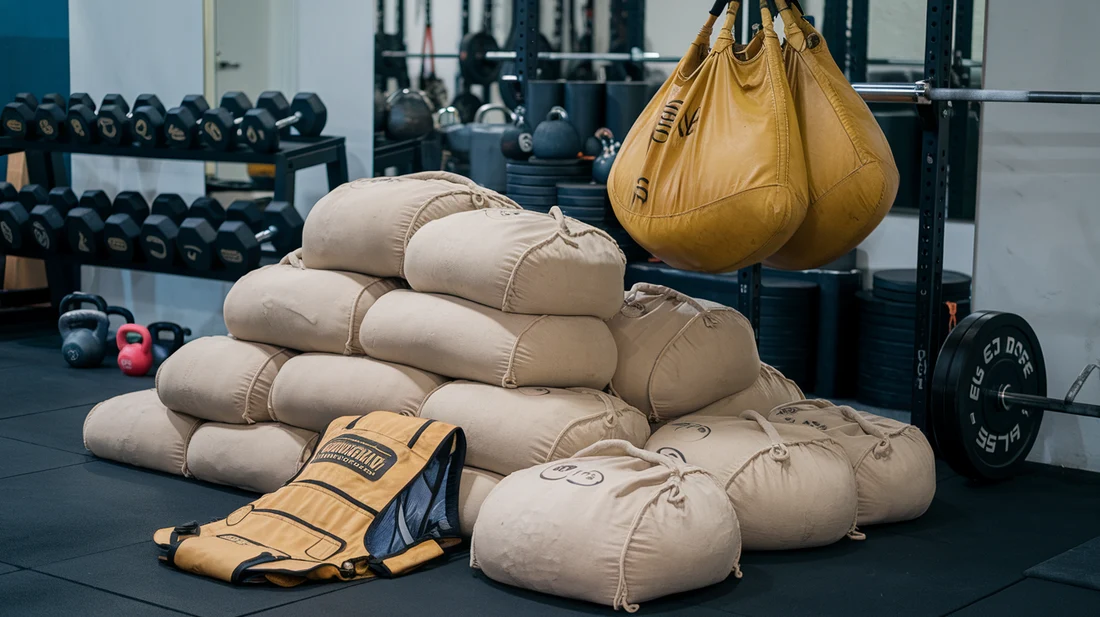
When it comes to sandbag training, selecting the right sandbag is crucial for maximizing your workouts and minimizing the risk of injury.
Here’s what you need to know:
Types of Sandbags
- Traditional Canvas Bags
- Pros: Durable, versatile, and typically more affordable. They come in various sizes and weights.
- Cons: Can be less comfortable to grip and may require additional padding for certain exercises.
- Bulgarian Bags
- Pros: Designed for dynamic movements, these bags have handles which make them great for throwing and carrying exercises. They also feature a unique shape that aids in balance and stabilization.
- Cons: Generally more expensive and can be heavier, which may not be suitable for beginners.
- Weighted Vests
- Pros: While not a traditional sandbag, weighted vests enhance bodyweight exercises and functional movements by adding resistance without compromising mobility.
- Cons: They don’t provide the same shifting weight dynamic of sandbags, which can be less effective for certain stability-focused workouts.
Weight Selection
Choosing the right weight is essential for an effective workout.
Here’s a simple guideline:
- Beginners: Start with lighter weights (10-20 lbs) to focus on form and technique without overexerting yourself.
- Intermediate Lifters: Aim for 20-40 lbs. At this stage, you should feel challenged but still be able to maintain proper form throughout each exercise.
- Advanced Lifters: Consider 40 lbs and above. Ensure you’re capable of controlling the weight and executing movements with precision.
As a general rule, if you’re able to complete your workout easily, it may be time to increase the weight to continue challenging yourself.
Safety Considerations
Before diving into sandbag workouts, remember these safety tips to keep your training effective and injury-free:
- Maintain Proper Form: Always prioritize good form over heavier weights. Poor technique can lead to injuries, particularly when handling an unstable load like a sandbag.
- Engage Your Core: A strong core is fundamental in stabilizing your body during sandbag exercises. Focus on engaging your core to help control the movement and protect your back.
- Warm Up and Cool Down: Always include a dynamic warm-up before your workout to prepare your muscles and joints, and finish with static stretching to aid in recovery.
By understanding the different types of sandbags, selecting the right weight, and adhering to safety guidelines, you’ll be well-equipped to tackle your sandbag workouts and make the most of this powerful training tool.
Workout Routine 1 – The Beast Mode Circuit
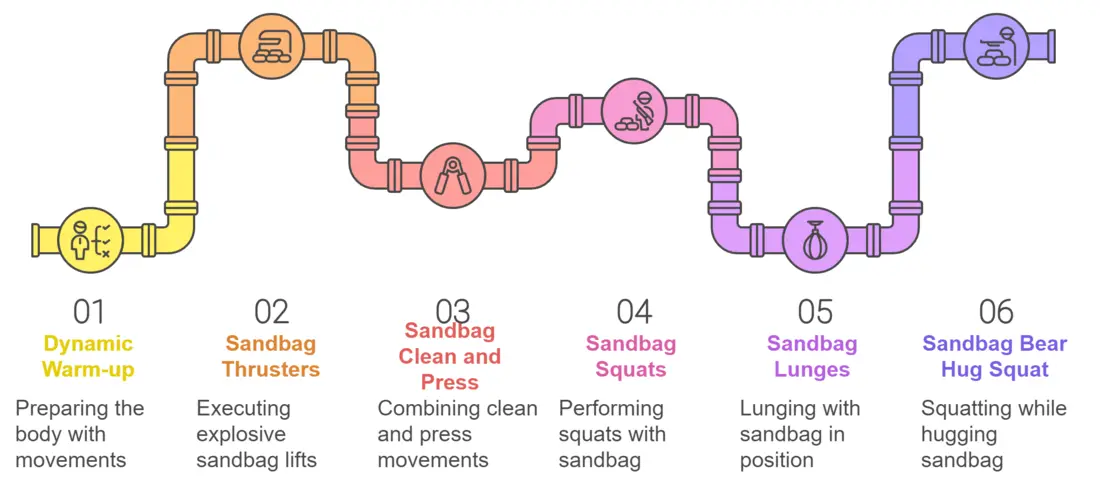
Dynamic Warm-up (10 minutes)
Before unleashing the beast, prime your body with these dynamic movements:
- Arm circles (forward and backward) – 20 seconds each direction
- Hip circles – 20 seconds each direction
- Walking lunges with torso rotation – 20 steps
- Bodyweight squats – 15 reps
- Mountain climbers – 30 seconds
- Jumping jacks – 30 seconds
- Cat-cow stretches – 10 reps each
The Workout
Complete 3 rounds of the following circuit. Rest 60 seconds between rounds.
1. Sandbag Thrusters

- Reps: 12
- Rest: 30 seconds
- Form:
- Start in a front rack position with the sandbag at your shoulders
- Drop into a squat, keeping your chest up
- Explosively drive up, pressing the sandbag overhead
- Control the descent back to start position
- Modification: Reduce weight or separate into squats and presses
2. Sandbag Clean and Press
- Reps: 10 each side
- Rest: 45 seconds
- Form:
- Start with the bag between your feet
- Hinge at hips, grab the bag with both hands
- Pull explosively, “catch” the bag at shoulders
- Press overhead, control the return
- Modification: Practice the clean and press separately before combining
3. Sandbag Squats
- Reps: 15
- Rest: 30 seconds
- Form:
- Hold the bag in front rack position
- Keep feet shoulder-width apart
- Squat until thighs are parallel to ground
- Drive through heels to stand
- Modification: Use lighter weight or hold bag in bear hug position
4. Sandbag Lunges
- Reps: 12 each leg
- Rest: 45 seconds
- Form:
- Hold bag in front rack position
- Step forward into lunge
- Keep front knee tracked over ankle
- Push through front heel to return
- Modification: Stationary lunges or reduce weight
5. Sandbag Bear Hug Squat
- Reps: 12
- Rest: 30 seconds
- Form:
- Hug sandbag tight to chest
- Feet slightly wider than shoulder-width
- Maintain neutral spine throughout
- Squat to parallel or slightly below
- Modification: Reduce weight or depth of squat
Cool-down (10 minutes)
Finish with these static stretches:
- Quad stretches – 30 seconds each leg
- Hamstring stretches – 30 seconds each leg
- Hip flexor stretches – 30 seconds each side
- Child’s pose – 1 minute
- Deep breathing exercises – 5 deep breaths
Pro Tips
- Scale the weight based on your fitness level
- Focus on form over speed
- Stay hydrated throughout
- Listen to your body and rest when needed
Workout Routine 2 – The Spartan Workout
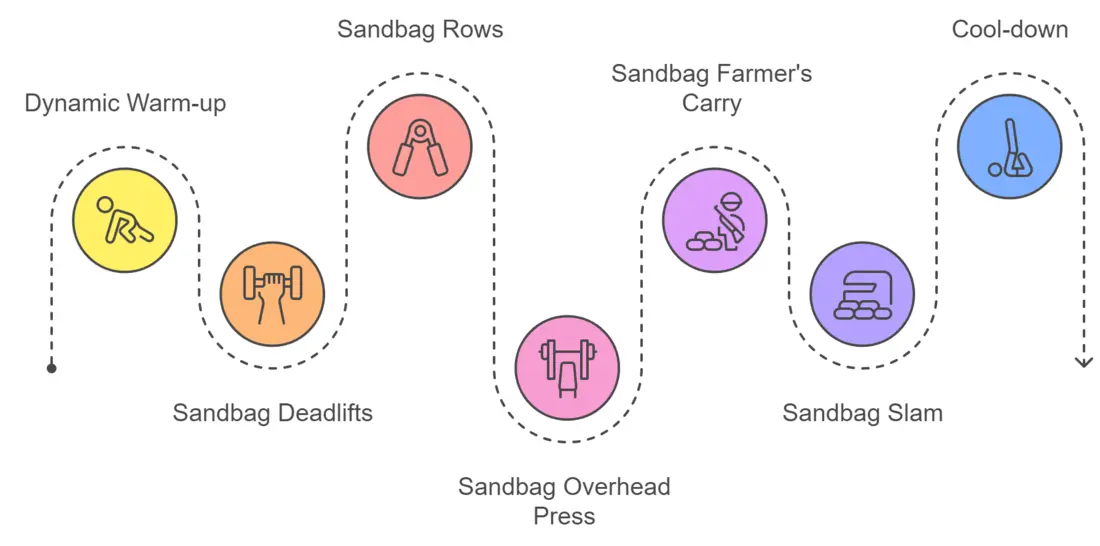
Dynamic Warm-up (10 minutes)
Get battle-ready with:
- Shoulder pass-throughs – 20 reps
- Leg swings (front/back, side/side) – 15 each leg
- Arm crossovers – 20 seconds
- Spinal twists – 10 each side
- High knees – 30 seconds
- Butt kicks – 30 seconds
- World’s greatest stretch – 5 each side
The Workout
Complete 4 rounds of the following circuit. Rest 90 seconds between rounds.
1. Sandbag Deadlifts
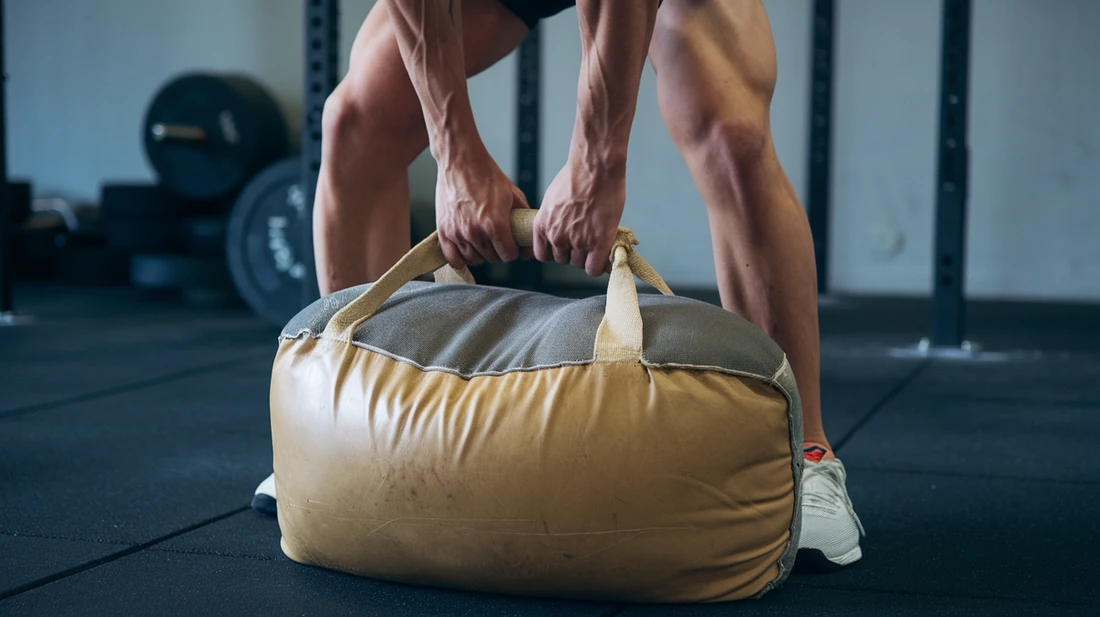
- Reps: 15
- Rest: 45 seconds
- Form:
- Stand with feet hip-width apart
- Hinge at hips, maintain flat back
- Grab bag with both hands
- Drive through heels, squeeze glutes at top
- Modification: Elevate bag on blocks to reduce range of motion
2. Sandbag Rows
- Reps: 12
- Rest: 30 seconds
- Form:
- Hinge forward at 45-degree angle
- Let bag hang at arms’ length
- Pull bag to lower chest
- Control descent
- Modification: Use lighter weight or perform kneeling
3. Sandbag Overhead Press
- Reps: 10
- Rest: 45 seconds
- Form:
- Start in front rack position
- Brace core tight
- Press bag overhead
- Control return to shoulders
- Modification: Push press to use legs for assistance
4. Sandbag Farmer’s Carry
- Distance: 50 feet each way
- Rest: 30 seconds
- Form:
- Grip bag handles tightly
- Stand tall, shoulders back
- Take controlled steps
- Maintain steady pace
- Modification: Reduce distance or weight
5. Sandbag Slam
- Reps: 10
- Rest: 45 seconds
- Form:
- Start with bag at chest
- Rise onto toes
- Slam bag down forcefully
- Squat to pick up, repeat
- Modification: Reduce force of slam or use lighter weight
Cool-down (10 minutes)
- Downward dog – 30 seconds
- Forward fold – 30 seconds
- Cross-body shoulder stretch – 30 seconds each
- Chest opener – 30 seconds
- Deep breathing – 5 minutes
Workout Routine 3 – The Ultimate Sandbag Challenge
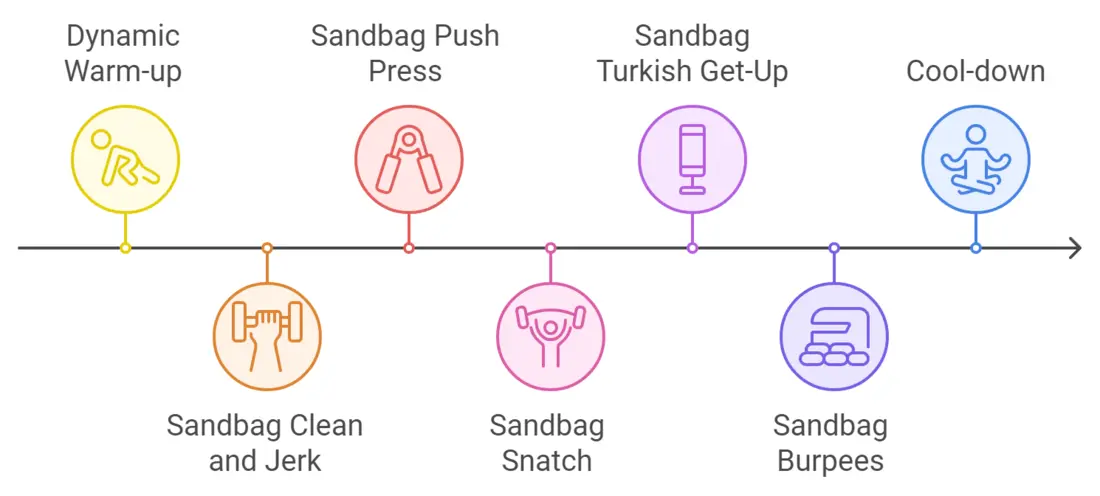
Dynamic Warm-up (12 minutes)
Prepare for intensity with:
- Jump rope – 2 minutes
- Dynamic lunges – 20 total
- Arm circles – 30 seconds each direction
- Bird dogs – 10 each side
- Plank to downward dog – 10 reps
- Bear crawl – 30 feet
- Inchworm walks – 10 reps
The Workout
3 rounds, with 2 minutes rest between rounds
1. Sandbag Clean and Jerk
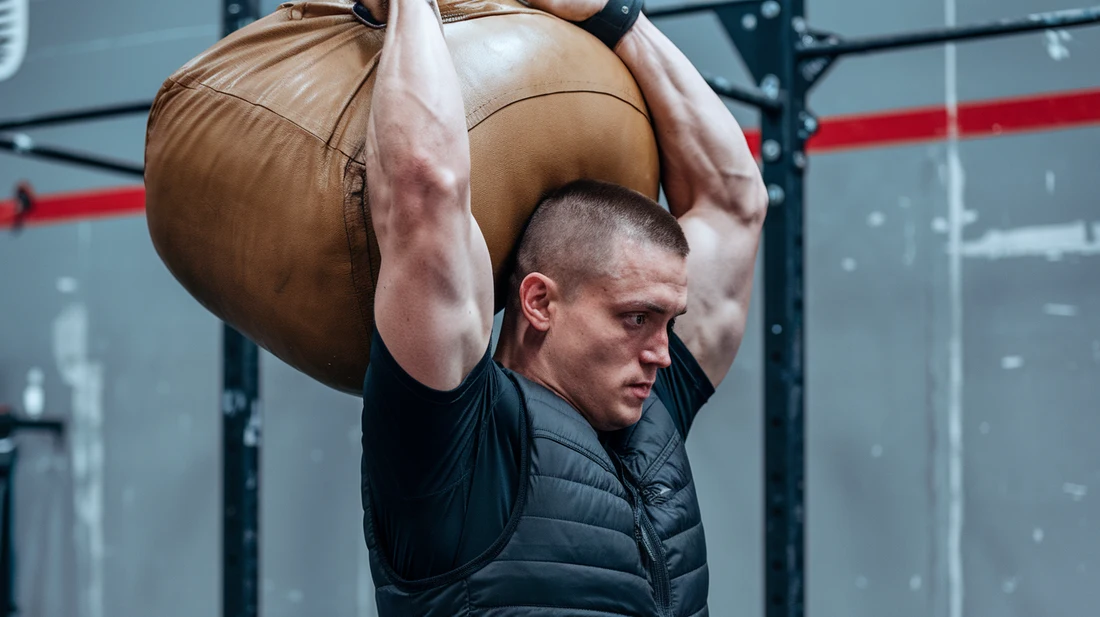
- Reps: 8
- Rest: 60 seconds
- Form:
- Clean bag to shoulders
- Dip slightly
- Drive bag overhead explosively
- Return to ground controlled
- Modification: Split jerk for stability
2. Sandbag Push Press
- Reps: 10
- Rest: 45 seconds
- Form:
- Start at shoulders
- Slight knee bend
- Explosive leg drive
- Press overhead
- Modification: Strict press or reduce weight
3. Sandbag Snatch
- Reps: 6 each side
- Rest: 60 seconds
- Form:
- Start between feet
- Explosive pull
- Guide bag overhead in one motion
- Control descent
- Modification: Break into clean then press
4. Sandbag Turkish Get-Up
- Reps: 5 each side
- Rest: 60 seconds
- Form:
- Start lying down, bag overhead
- Rise to standing, keeping bag stable
- Reverse movement pattern
- Modification: Practice without weight first
5. Sandbag Burpees
- Reps: 10
- Rest: 45 seconds
- Form:
- Start standing with bag
- Place bag down, perform burpee
- Pick up bag, press overhead
- Return to start
- Modification: Step back instead of jump, eliminate press
Cool-down (15 minutes)
- Extended child’s pose – 1 minute
- Thread the needle – 30 seconds each side
- Pigeon pose – 1 minute each side
- Supine twist – 1 minute each side
- Corpse pose with deep breathing – 5 minutes
General Tips for All Workouts
- Scale intensity based on experience
- Perfect form before increasing weight
- Rest adequately between workouts
- Stay hydrated
- Track progress
- Listen to body signals
Tips for Maximizing Your Sandbag Workouts
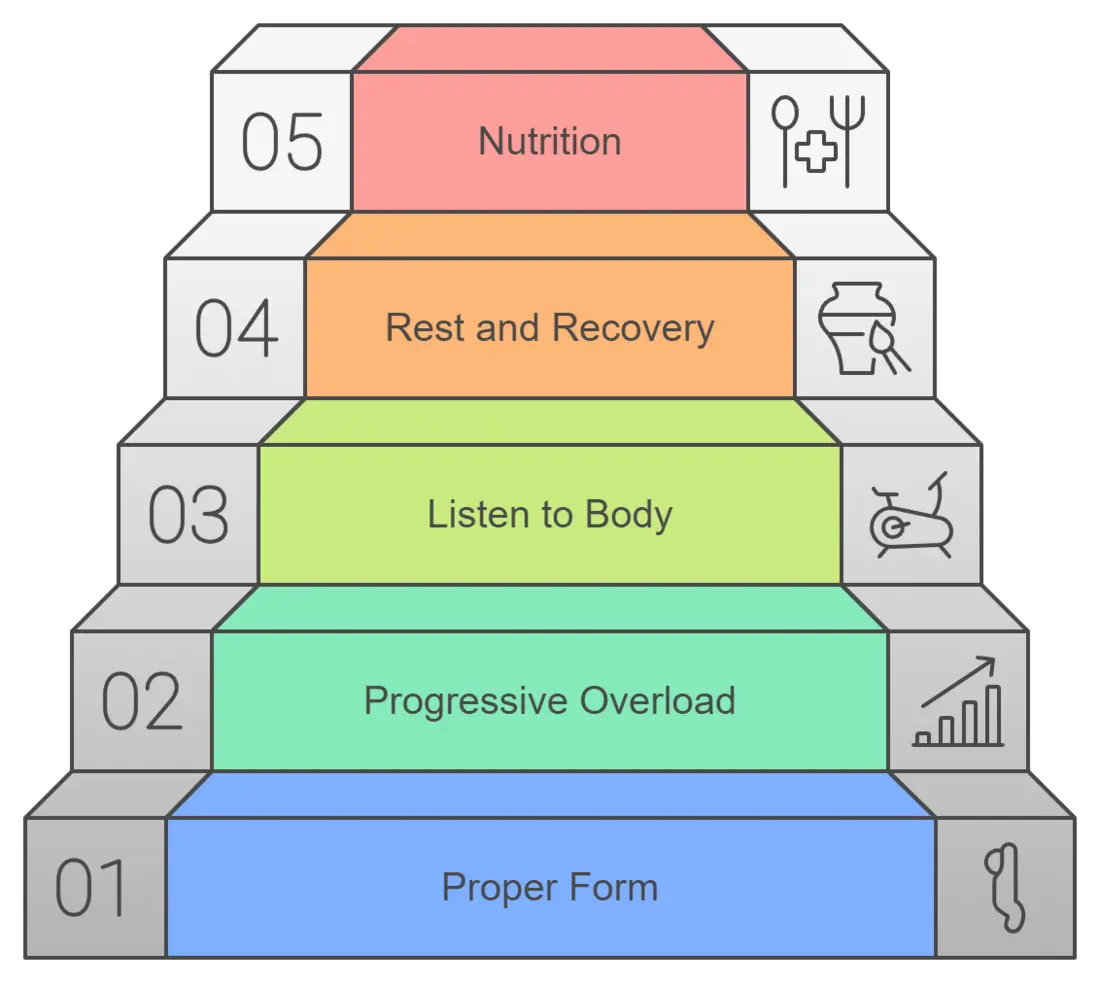
To truly unleash your inner beast and get the most out of your sandbag training, keep these essential tips in mind:
1. Proper Form
Maintaining proper form is crucial in preventing injuries and ensuring you’re engaging the right muscle groups.
Focus on:
- Keeping a neutral spine during lifts.
- Engaging your core to support your movements.
- Performing each exercise deliberately and with control, rather than rushing through reps.
If you’re unsure about your form, consider seeking guidance from a trainer or recording yourself to identify any areas for improvement.
2. Progressive Overload
To continue making gains and avoid plateaus, incorporate progressive overload into your training regimen.
This means gradually increasing:
- The weight of your sandbag.
- The number of repetitions or sets.
- The intensity of your workouts (shortening rest times, adding more complex movements).
By consistently challenging your body, you’ll build strength and endurance over time.
3. Listen to Your Body
Paying attention to your body’s signals is vital for long-term success.
If you experience:
- Unusual pain or discomfort, especially in your joints, stop and assess your form or weight.
- Fatigue or soreness beyond normal levels, consider taking a rest day or opting for lighter workouts.
Being intuitive about your body’s needs will help you avoid injuries and improve performance.
4. Rest and Recovery
Never underestimate the power of rest! Recovery is just as important as the workouts themselves.
Ensure you:
- Get adequate sleep each night to promote muscle repair.
- Incorporate rest days into your weekly routine, allowing your muscles to recover and grow.
- Use active recovery techniques such as light walks, yoga, or foam rolling to aid in muscle recovery.
5. Nutrition
Fuel your body with a balanced diet to support your training goals. Key points to consider:
- Prioritize whole foods, including lean proteins, healthy fats, and plenty of fruits and vegetables.
- Stay hydrated before, during, and after workouts to optimize performance and recovery.
- Consider timing your meals and snacks around your workouts to ensure your body has the energy it needs when you need it most.
By focusing on these key areas, you’ll maximize the effectiveness of your sandbag workouts, enhance your functional strength, and set yourself up for success on your fitness journey.
Conclusion
Sandbag training is more than just a trend – it’s a powerful, efficient way to build functional strength, improve core stability, and enhance overall athletic performance.
With the unique shifting nature of sandbags, you can challenge your muscles in ways traditional weights simply can’t match.
Throughout this article, we’ve explored three intense sandbag workouts, each designed to push your limits while being adaptable to all fitness levels.
Key Benefits Recap
- Versatility: Sandbags can be used for a wide range of exercises, targeting multiple muscle groups simultaneously.
- Functional Strength: They prepare your body for real-world movements, making daily tasks easier and enhancing sports performance.
- Core Stability: The dynamic nature of sandbags forces your core to engage, leading to better overall stability and balance.
Now it’s your turn to unleash your inner beast!
We encourage you to dive into these workouts, experiment with the techniques, and share your experiences with us.
Remember, your fitness journey is unique, and every step you take is a step toward your goals.
Join Our Community! For more fitness tips, motivation, and support, don’t forget to follow us on social media!
Connect with us on Facebook, Pinterest to stay updated and share your progress.
Let’s inspire each other to reach new heights in our fitness journeys!


